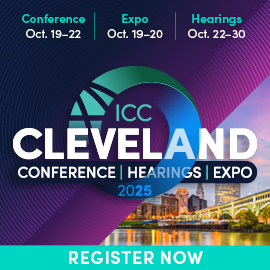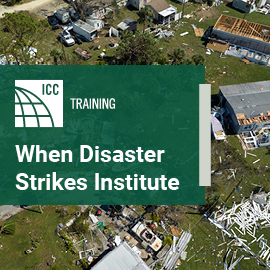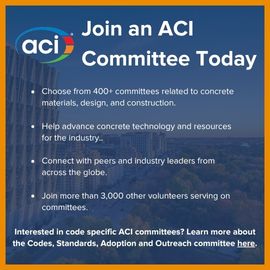Embodied Carbon
Embodied Carbon in Buildings and Building Materials
“Buildings are currently responsible for 39% of global energy related carbon emissions: 28% from operational emissions, from energy needed to heat, cool and power them, and the remaining 11% from materials and construction [also known as embodied carbon].
Towards the middle of the century, as the world’s population approaches 10 billion, the global building stock is expected to double in size. Carbon emissions released before the built asset is used, referred to as ‘upfront carbon’ [or ‘embodied carbon’], will be responsible for half of the entire carbon footprint of new construction between now and 2050, threatening to consume a large part of our remaining carbon budget.“
Getting Started
Embodied carbon refers to the carbon emissions released during the extraction, manufacturing, transportation, construction and end-of-life phases of buildings; it accounts for around 11 percent of all global carbon emissions. Embodied carbon may refer to the embodied carbon of a whole building or the embodied carbon of a single building material. Often referred to as the hidden carbon impact of the buildings and construction sector, embodied carbon’s impact on global carbon emissions presents a significant opportunity for jurisdictions to drastically and quickly curb global carbon emissions by adopting policies that address embodied carbon. Additionally, the World Green Building Council theorizes that “if the building and construction sector were to drastically shift demand towards low carbon options for [the most carbon intensive materials: concrete, steel and aluminum], this would require a transformation in the manufacturing processes of the supply chain. This would affect the total emissions for those materials streams and have an enormous impact on emissions mostly attributed to other sectors through these three materials alone. The total potential impact, therefore, of the buildings and construction sector, is far greater.”
Unlike operational carbon emissions, which can be reduced over time with building energy efficiency renovations and the use of renewable energy, embodied carbon emissions are comprised of (1) one-time emissions from construction material extraction, manufacturing, and transportation; and (2) the one-time emissions from the construction of a building, and they cannot be taken back once emitted.
The building sector is well-positioned to have a significant impact on emissions reductions, given the impact of embodied carbon on global carbon emissions, and the limited attention that these sources of emissions have had to date. Building design teams that seek to minimize both operational and embodied carbon emissions can significantly reduce their overall carbon footprint, low carbon alternatives exist today. Predominant building materials like concrete, steel, wood, and insulation have high-impact potential for emissions reductions, and in some cases, there are opportunities for carbon sequestration in these and other materials. Secondly, consideration of lower emission products challenges many existing building practices and industrial norms. Not unlike the early years of green building, the subject of embodied carbon in the built environment is relatively new, and dynamic, and there is not yet industry consensus.
Operational Carbon versus Embodied Carbon
Evolution of the energy codes over the last three decades has offered a significant decrease in operational carbon emissions. Only recently has more information become available to help builders and designers make decisions regarding reducing embodied carbon. Unlike operational carbon emissions which can be reduced over time with building energy efficiency retrofits, future electrification of HVAC and the addition of renewable energy, embodied carbon emissions are locked in place once the building is built.
Including embodied carbon in the suite of policies, building codes and design choices is another tool for jurisdictions to address climate impact of the built environment.
The American Institute of Architects has identified 10 steps that can be taken to reduce embodied carbon.
- Reuse buildings instead of constructing new ones.
- Use low carbon concrete mixes.
- Limit carbon intensive materials.
- Choose lower carbon alternatives.
- Choose carbon sequestering materials.
- Reuse materials.
- Use high-recycled content materials.
- Maximize structural efficiency.
- Use fewer finish materials.
- Minimize waste.
LEED, the International Green Construction Code, and Living Future are helping to build market awareness of these material choices and create a market for beneficial products. In addition, jurisdictions can have a significant impact through incorporating embodied carbon policies into and alongside codes and standards.
“Building elements such as foundations, frames and other forms of superstructure often represent the biggest contribution to embodied carbon, not least because of the large volumes of material they use. But, additionally, these elements often contain carbon intensive load bearing structural materials such as steel, concrete and masonry. Facades may also contribute significantly if they utilize large amounts of aluminium and glass, both of which have carbon intensive production processes.”
- Concrete is the most widely used construction material throughout the world and it’s responsible for 6-11% of global CO2 emissions. Using less cement in the concrete mix, whilst maintaining its structural integrity, is the most effective way to reduce the carbon footprint of concrete. Design teams can also be incentivized to use less concrete in many structures.
- For steel, the embodied carbon impact can differ based on the manufacturing process used. Most of the current global steel production is manufactured using a basic oxygen furnace (BOFs) production method. Under this method 37% of materials are recycled content. Whereas as electric arc furnaces (EAFs) can use up to 100% recycled material without compromising metallurgical properties. Furthermore, since EAFs are powered by electricity there is potential for this manufacturing process to further reduce emissions when powered by renewable energy.
- Wood naturally sequesters carbon while growing and will continue to store carbon when used in construction. Using reclaimed wood and specifying use of wood from sustainably managed forests is the best way to reduce embodied carbon emissions from wood harvesting. Where sustainably harvested wood is used as a structural alternative to steel or other more emissions intensive products it reduces embodied carbon. This has led to growing interest in mass timber framed buildings and structural products such as cross-laminated timber, that have significant potential economic and emissions benefits over more traditional steel-framed commercial buildings.
- Insulation can contribute significantly to a building’s embodied carbon or alternatively help to sequester carbon depending on the materials used. When selecting insulation, thermal operational energy considerations should be balanced with an awareness of embodied carbon impacts and targets.
This is just a subset of building materials that have low-carbon alternatives. The current challenge is accurately quantifying the impact of reducing embodied carbon. However, this will only become easier as awareness grows throughout the industry and more industry practitioners decide to focus on the embodied carbon impact of their buildings.
Determining the Embodied Carbon of Building Materials and Products
Accurately quantifying the embodied carbon or CO2 equivalent emissions associated with a building material’s “cradle to grave” footprint is challenging, but becoming increasingly more accessible and affordable. Three tools are used to determine the embodied carbon: the Product Category Rule (PCR), Life Cycle Assessment (LCA), and Environmental Product Declaration (EPD).
Product Category Rule. The PCR sets up the rules or criteria by which a specific building material or product type is evaluated regarding its environmental impacts. These criteria may include things like the market location, or rules for averaging. The lack of standardized methodology in developing PCRs has resulted in incomparable environmental claims and has reduced the overall credibility of the LCA-based product claims for decision making.
Life Cycle Assessment. Once a PCR has been developed an LCA is performed and a report of the results is produced. An LCA is a science-based holistic methodology that seeks to answer the question of “how sustainable is a product, building, or process?” so that a project team may identify the “environmental hotspots” of a building with respect to greenhouse gas emissions and environmental impact, and make informed design decisions that minimize the environmental impact of the building. An LCA seeks to provide transparency about the environmental impact of a building project over its lifetime from the extraction of materials for manufacturing, to transportation, construction, operations, and building’s end-of-life. The process of performing an LCA involves a lot of data gathering, computer modeling and documentation. The software used to model the results pulls raw material data from one of a few existing databases. It should be noted that there are differences in the databases and software that will produce different results for the same product. LCAs are detailed and often contain proprietary product formulation or manufacturing information; they are rarely released publicly.
Environment Product Declaration. The EPD is provided by a product manufacturer or industry. A third-party will take the LCA and summarize the important information in the EPD. Depending on how the LCA was conducted, an EPD may provide averaged industry wide information, averaged product family information, or specific product information. EPD development is standardized by ISO 14025, Environmental Labels and Declarations, Type III Environmental Declarations, Principles and Procedures. Before an EPD can be produced, a Product Category Rule (PCR) needs to be created. EPDs do not include this proprietary information and are typically available on public websites.
Comparisons of EPD data, like carbon dioxide (CO2) emissions are only reliable when they have used the same PCR and LCA software and assumptions. Changes in versions of software and PCRs can have a significant impact on the results. Evaluating both the embodied and operational carbon impacts of a building project should be viewed as a holistic process. There may be times when project goals conflict with one another and compromises will need to be made. For instance, there are a variety of other criteria that must also be considered during project development such as durability, fire safety, structural safety and moisture management. It is imperative that policy makers and users understand the limitations of available data.
Embodied Carbon Policy Case Study: City of Vancouver, British Columbia
“Vancouver has a goal to achieve a 40% reduction in embodied carbon from construction by 2030 [compared to 2018 levels]. As part of this strategy, the City of Vancouver will use its policy and regulation, public procurement, networks and influence to create a more sustainable way of building in the city. With a concerted effort, the City can transform how buildings are built, what they are made of, and the impacts of those materials before, during, and after a building is used. Carbon pollution can be significantly reduced while also improving health, equity and waste outcomes from construction and its materials.”
The city has adopted four actions, each with the goal of transforming different parts of the construction sector to achieve the goal. The four actions are summarized as follows. Detail can be found in Appendix K of the Vancouver Climate Emergency Action Plan[2].
- Change the Rules: Policy and Regulation “It’s only permitted to build low-carbon buildings” (section 4.1)
- Change the Market: Remove Barriers and Provide Incentives “It pays to build low-carbon buildings” (section 4.2)
- Change the Culture: Capacity Building and Industry Transformation “Our knowledge, tools, networks, and culture support low-carbon buildings” (section 4.3)
- Change the Context: Complimentary Strategies and Actions “The construction ecosystem enables and encourages low-carbon buildings” (Section 4.4)
Resources
There are several resources and tools available to help guide users when making decisions about building materials and products. When using these tools and resources, it is highly recommended that the user become familiar with the methodologies used to develop them and be mindful that the information contained in some tools may not be comparable to another tool. Visit the International Code Council energy resources page for more information.







